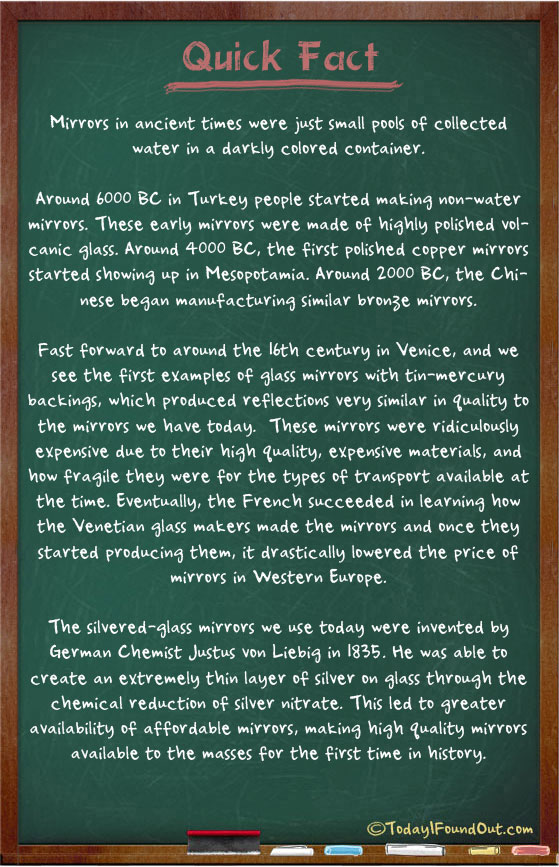The First Mirrors Were Simply Water Placed in a Darkly Colored Vessel
Mirrors in ancient times were typically just small pools of collected water with the vessel containing the water having a dark color to it.
As early as 6000 BC in Turkey people started manufacturing non-water mirrors. These early mirrors were usually made of obsidian, which is a naturally occurring volcanic glass. These pieces of obsidian would be cut appropriately and highly polished to give off a reflection. Around 4000 BC, the first polished copper mirrors started showing up in Mesopotamia. Around 2000 BC, the Chinese began manufacturing similar bronze mirrors.
Fast forward to around the 16th century in Venice, and we see the first examples of glass mirrors with tin-mercury backings, which produced reflections very similar in quality to the mirrors we have today. These mirrors were ridiculously expensive due to their high quality, expensive materials, and how fragile they were for the types of transport available at the time. Eventually, the French succeeded in learning how the Venetian glass makers made the mirrors and once they started producing them, it drastically lowered the price of mirrors in Western Europe.
The silvered-glass mirrors we use today were invented by German Chemist Justus von Liebig in 1835. He was able to create an extremely thin layer of silver on glass through the chemical reduction of silver nitrate. This process led to greater availability of affordable mirrors, making high quality mirrors available to the masses for the first time in history.
| Share the Knowledge! |
|






Where are your sources? The only link to sources is just another article.